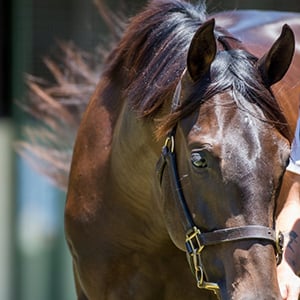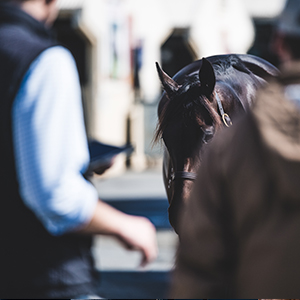*This information is provided on an “as-is” basis and may or may not contain the views of Magic Millions as it’s sourced directly from CARRAZZO CONSULTING and reproduced with their permission.
The New Horse Loss Rules – Updated tips for ruling applications
It is now nearly 3 years since the new horse loss rules for high income earners were introduced on 1 July 2009 and over the past 18 or so months our office has lodged and reviewed many of the applications required to have these losses approved.
It has now reached the point where I’m in an ideal position to share with the industry some of the specific issues our office has encountered when applying for these rulings, many coming to the surface only once the ATO has been challenged to interpret the meaning and spirit of these new rules.
Issue 1 – A horse business that has made a tax profit cannot apply under the “Nature Of Activity” ground
Under these rules, a person (alone or in partnership), cannot claim an immediate loss for their breeding and/or racing losses if they have an “adjusted taxable income” (ATI) in excess of $250,000.
Where the $250,000 income test is failed, the only way the person can claim the loss is if they apply to the ATO to exercise its discretion to allow the loss in either of the following two circumstances:
• Circumstance 1 – The business was (or will be) affected by special circumstances beyond the control of the operators of the business (e.g., a fire, flood, drought, diseases affecting livestock or crops (e.g. EI), a pest plague or a hailstorm; or
• Circumstance 2 – The business, because of its nature (read “Nature Of Activity”), is not expected to become commercially viable until some time after it has commenced. Horse Breeding and many primary production activities very much fit into this category.
What must be noted is that the latter Nature Of Activity (“NOA”) ground is available to assist start up businesses that due to their inherent nature, can take many years to generate a tax profit.
Accordingly, a business that has already generated a tax profit in its earlier years cannot seek to apply under the NOA ground, as they have already made a profit within the accepted industry lead time period.
Example
Maxine is a high income earning breeder who has been breeding horses for 5 years (i.e. since 1 July 2005) and in the 2010 tax year incurs a tax loss of $100,000.
The 2008 tax year was the “ray of light” for Maxine as a nominal tax profit of $5,000 was derived, due to the enormous price received for a foal out of a mare acquired “in-foal”. However, all other years have generated losses and realistic projections indicate that the business will only again be profitable in the 2013 tax year, some 8 years after the activity commenced (being within the accepted industry 8 year lead time for a breeding business).
In this example, Maxine could not apply under the NOA ground for the tax years 2010-2012 losses to be accepted as a profit (albeit a nominal profit) has already been derived in the 2008 tax year, this being within the 8 year lead time period.
The only ground that Maxine could apply to have her 2010 loss deducted is via the stricter “Special Circumstances” ground.
Issue 2 – ATO not considering a NOA application where business has generated income only, even though a profit has never been made
Our office found this problem moreso in the early days of these applications being processed, but be aware that the ATO can take a while to get their case officers properly trained!
This problem was created when the ATO thought that an activity could not apply under the NOA ground if it commenced to generate income within the 8 year lead time period. Regrettably, they confused the concept of “income” and “tax profit”.
Bottom line – if the ATO refuses to process your NOA application using this wrong rationale, you very much have the law on your side!
Example
Gerry is a high income earning breeder who commenced his breeding activity on 1 July 2008.
Gerry’s private ruling projections indicated that he would make a tax profit from his activities during the tax year ended 30 June 2014, within the 8 year lead time period.
However, during the 2010 tax year, Gerry lost a valuable foal via a paddock accident and received an insurance payout of $100,000. This was his only income for that year, however it still did not cover expenses and a tax loss was still incurred in the 2010 tax year.
The ATO tried to argue that as he had generated some income prior to his application and within the lead time period, a NOA application could not be considered. Gerry’s diligent accountant successfully argued that the ATO were confusing the concept of “income” and “tax profit” and his NOA application was duly processed.
Issue 3 – Make sure your financial projections are realistic
These private ruling applications must include financial projections indicating that your business will generate a tax profit within a “commercial” time frame.
We are finding that the ATO can be very unpredictable in the way they assess these projections. For instance, if the activity has generated heavy losses within the early years, they can be very sceptical if projections are lodged indicating a tax profit can be made, no matter how credible they may be. Some areas I would pay special attention to:
- If foals are part owned, ensure only your share of estimated sale proceeds are included;
- Factor in that your mares may not generate a foal every year (n.b. average live foal rate is 61% for mares covered); and
- If your expenses decrease over time, yet stock number remain relatively constant, explain to the ATO why this is occurring. For instance, service fees maybe decreasing as stallion shares have been acquired and you are taking up your service entitlements that you need not pay for.
To play it safe, I would have a financially savvy expert specifically verify the accuracy of your projections, ensuring the expert is independent of your horse affairs.
Issue 4 – ATO are taking the lead time period from the time the “business activity” commenced, not from the time that the applicant commenced the business
This approach was something the tax community definitely did not see coming!
If you consider ATO rulings and facts sheets on these new rules and the actual way in which these laws are drafted, it would be very reasonable to assume that the lead time for the breeding activity commences at the time the applicant commences the activity. Not so. The ATO consider the lead time period to commence from the time the “business activity” originally started, regardless of who or what entity was running the business at that time.
This is a crucial issue as the activity needs to become “commercially viable” within a “lead time” acceptable for that industry for the ATO to rule in your favour and allow the immediate deduction of the loss.
Example (adapted from a previous Carrazzo media release)
Fred the horse breeder owns a property in the Hunter Valley where a breeding business has been operated by himself since 1 July 2002.
Fred died on 30 June 2008 and the business was passed to his wife, Dorothy. For a number of reasons, the breeding business has never made a profit for the entire period 1 July 2002 to 30 June 2011, some 9 tax years.
Dorothy is a high income earner and is forced to apply for a private ruling to be able to deduct her horse breeding losses for the tax years 2011 to 2014 inclusive.
In her application, Dorothy’s projections note that a profit will first be made in the FY 2015. This profit has been supported be expert reports that indicate that the lead time for her to make a profit is “8 years”. As Dorothy commenced the business in her own right on 1 July 2008, a profit by FY 2015 is within this 8 year “lead time” period.
Though the ATO accepted the “reasonableness” of her projections, they said she was outside the lead time of 8 years as the business activity had actually started with Fred back on 1 July 2002! Using this older start date, the “lead time” for generating a profit is now increased to 13 years (based on a FY 2015 profit) and this now puts the business well outside the accepted 8 year lead time and Dorothy’s application to claim the losses was unsuccessful.
Issue 5 – ATO very strict on what is a “special circumstance”
As noted above, the ATO can exercise its discretion to allow the loss if “special circumstances” impact on the ability of the activity to make a profit.
If applying under this ground, it seems that every bit of bad luck that occurs with a horse is not “special” or “abnormal” to the ATO, even though it is “outside the control” of the breeder or owner. These include:
- Mare abortions;
- Foals failing scope tests after sale;
- Paddock and track accidents; and
- Foals dying at birth.
Per ATO rules, “Special circumstances” are those circumstances “which are sufficiently different to distinguish them from the circumstances that occur in the normal course of conducting a business activity.”
The special circumstances must be outside the control of the operators of the business activity. Such circumstances are specifically defined to include drought, flood, bushfire or some other natural disasters. In other words, they are “unusual”, “uncommon” or “exceptional”. In the case of other events, failure for no adequate reason to adopt practices commonly used in an industry to prevent or reduce the effects of special circumstances may point to the special circumstances not being outside the control of the operator. Unfortunately, this is how the ATO are currently viewing the occurrences I have outlined above.
Be warned, if seeking the ATO’s relief using “special circumstances”, the onus is on you to prove that not only did they prevent you from making a profit in the tax year (preparing an adjusted P&L supporting this is highly recommended), but that they are “outside the normal course” of horse industry activities.
Issue 6 – Industry lead time for horse breeders is not strictly “six years”
Our office and others have successfully argued 8 years as the lead time for profitability within the breeding industry, this being evidenced by successful private rulings lodged with the ATO. These rulings can be accessed publically via the ATO register of private binding rulings.
When the ATO began processing these applications a few years ago, it seemed that they were very fixed on “6 years” being the lead time for breeding activity profitability, however further external evidence put to them via the industry and these applications has thankfully changed this position
Don’t let the ATO intimidate you on this issue!
Please also note that the ATO ruling on these new rules does give the applicant the scope to argue for an extension to the generally accepted lead time if there are, in their words “…special circumstances outside the control of the operators of the business activity have meant that there is no longer an objective expectation that within the period that is commercially viable for the industry concerned the activity will …produce a tax profit”.
You are welcome to contact the writer if you wish me to clarify or expand upon any of the matters raised in this release.
End of release.
DISCLAIMER
Any reader intending to apply the information in this article to practical circumstances should independently verify their interpretation and the information’s applicability to their particular circumstances with an accountant specialising in this area.
Prepared by:
PAUL CARRAZZO CPA
CARRAZZO CONSULTING CPAs
22 BLACKWOOD ST, NORTH MELBOURNE VIC 3051
TEL: (03) 9329 7044
FAX: (03) 9329 8355
MOB: 0417 549 347
E-mail: paul.carrazzo@carrazzo.com.au
Web Site: www.carrazzo.com.au





